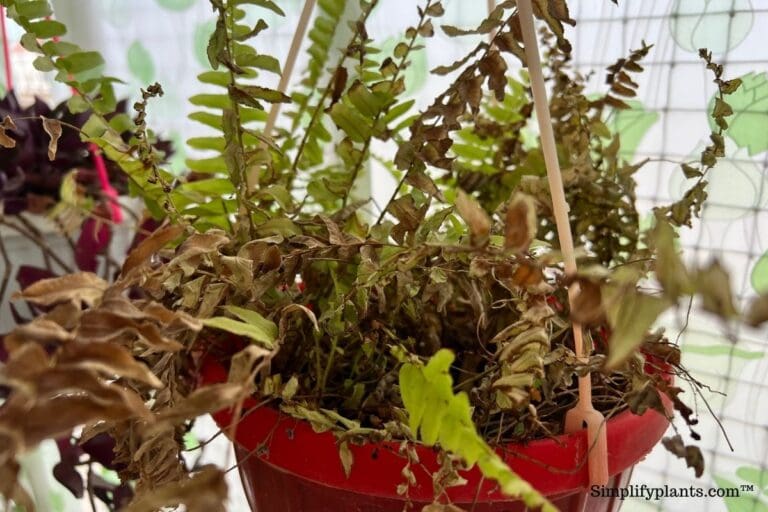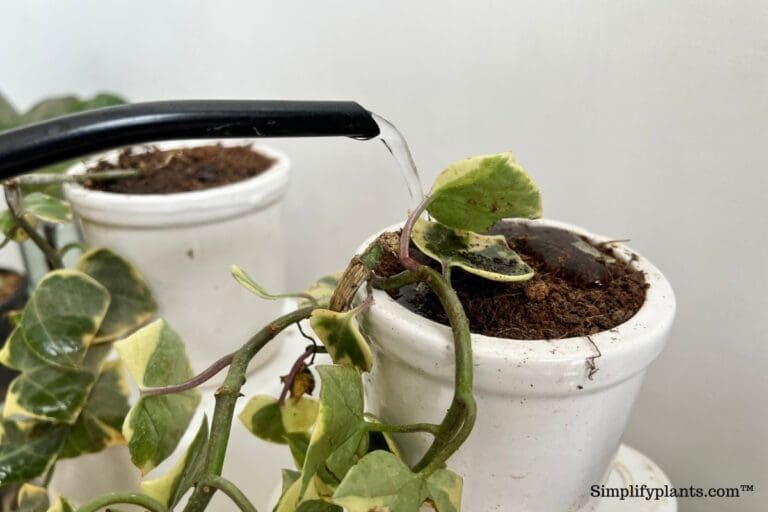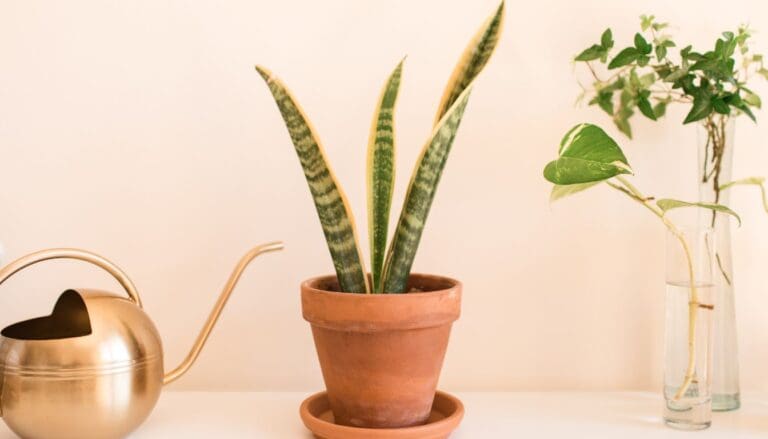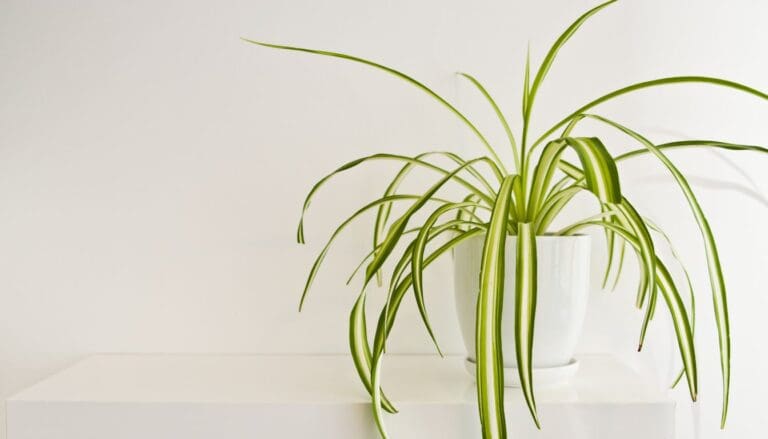Philodendron Winter Care: Common Problems, Cold Tolerance & More
Philodendrons enter a dormant state in winter, which means that during this time, the plant rests. It cannot grow much due to the low light and low temperatures, so you may notice slow growth or no growth during this time. But that is natural, so you don’t need to freak out!
However, if you don’t change the care routine of your philodendron in winter, the plant can face some severe issues. Thus, understanding the winter care routine of your philodendron is crucial.
As a general rule, during the winter months, you must reduce the watering frequency of your philodendron and cut down on fertilizer as the plant remains dormant. Also, move the philodendron away from cold drafts in a brightly lit spot, and maintain a humidity level of 60% and above.
You must adopt a separate care routine during the winter months. If you do no know what we are saying, keep reading this article.
We will share some winter care tips to help your philodendron survive the winter without any trouble.

Please note: Simplify Plants is reader-supported. Some links in the post are affiliate links and I get a commission from purchases made through links in the post.
Common problems of philodendron in winter
If you are a beginner with the philodendron, you might be concerned about why your philodendron is not growing. You must not worry, as this is entirely natural for your philodendron to rest during the winter months and take a break from growing.
But, if there is something that you need to be concerned about, those problems can occur if you keep caring for the philodendron in the same way you do in the summer and spring months.
Some common problems that your philodendron can face during winter are:
- Over-fertilization
- Overwatering
- Leggy growth
- Leaf drop
You must have heard that houseplants require fertilizers for their growth. But that is true only when the plant is growing.
Philodendrons require most fertilizer during the growing months, summer and spring. You should start reducing the fertilization from fall and stop it entirely in winter.
Philodendrons won’t require any fertilizers in winter as they don’t grow much during this time. So, adding fertilizer will cause over-fertilization that will affect the roots and stress the plant.
In winter, the intensity of the light reduces, and the temperature levels fall below average. These conditions don’t let the soil dry fast, so if you don’t reduce the watering in winter, the philodendron will get overwatered.
Overwatering can make the leaves go brown and cause root rot to the plant.
In winter, the philodendron might become leggy due to a lack of light. You can use artificial lights to help the plant.
Keep the philodendron away from cold drafts in winter. The leaves can drop due to being exposed to cold drafts. Keep the plant away from the window to protect it from both frost and cold drafts.
Winter care of philodendron plants
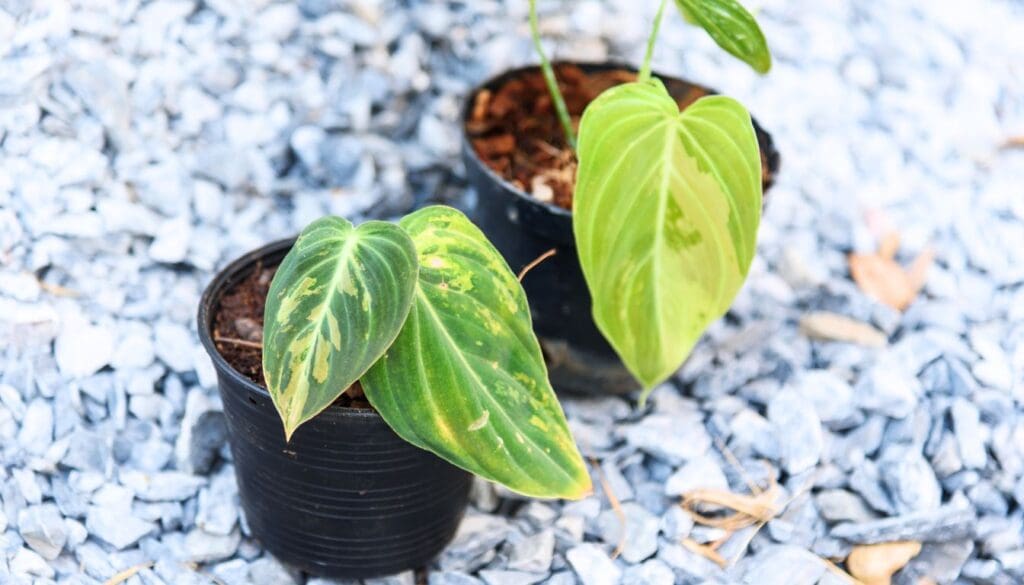
The best time of the year for killing a philodendron houseplant is in the winter. Like all other indoor and outdoor plants, philodendrons require special care and attention during the winter months.
These houseplants are put through unfavorable growing conditions such as decreased light levels, dry air, shorter days, and frigid temperatures in winter.
Adjusting the care procedures to meet the seasonal changes is the key to helping these plants survive the winter. Therefore, you must review the fundamentals to provide the philodendrons with the best possible care during winter.
While many indoor gardening procedures change or vary throughout the year, the most crucial are light and humidity. However, many other factors affect the plant in cold weather. To keep the philodendron safe and healthy, the owner must keep the following considerations in mind.
Factors affecting the plant in winter
Some of the crucial factors that affect the health of your philodendron during the winter months are:
Light
Your philodendron might not be getting enough light if it has tiny leaves or long gaps between the leaves.
Move the philodendron to a brighter spot, but not directly into the sun, as this can scorch the leaves. It can also grow well in fluorescent light, making it an excellent office plant.
Partially shaded areas are ideal for philodendrons. They would obtain diffused light in the shade rather than straight sunlight. Place the plants near a window that receives bright and indirect light indoors.
If there is not enough light, the plant will become weak, and there will be long gaps between the leaves. Therefore, optimum light is ideal. However, too much light can also cause many leaves to become yellow at once.
Also read: What Kind Of Light Does A Philodendron Need? (Light Requirements)
Water
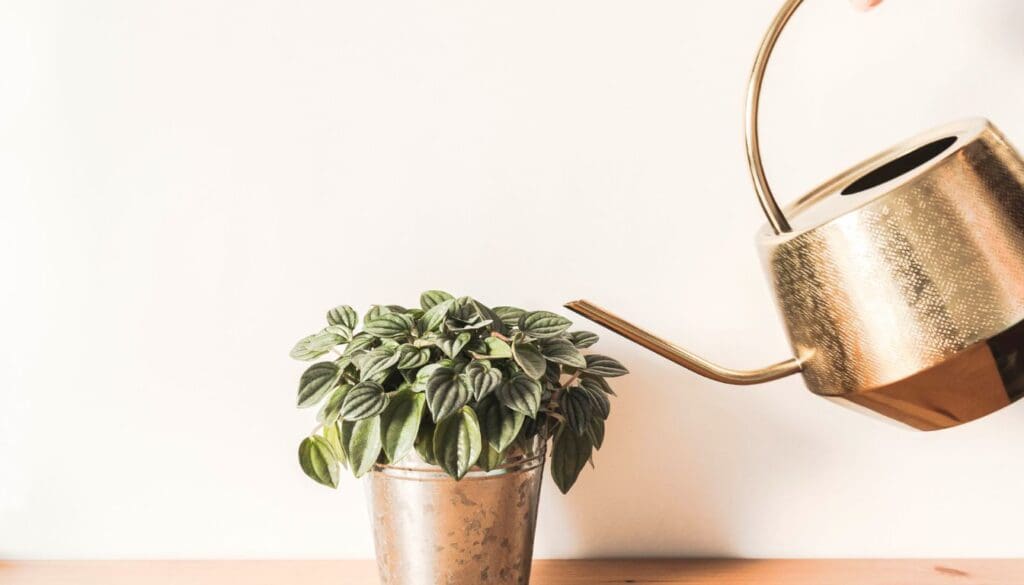
In the winter, allow the surface to dry out completely between watering, as overwatering the plant can result in yellow leaves.
Since cold water shocks these tropical inhabitants, always try to use room temperature water for your houseplants.
These plants prefer a modest amount of moisture in the soil. When the top inch of the soil has dried out, water them as soon as possible.
The leaves of philodendrons can droop due to both overwatering and under-watering. So, you must analyze and decide accurately if it is time to water the plant by checking the soil’s dryness rather than the foliage.
Philodendrons do not thrive in wet soil because the roots do not develop much. Drought tolerance is slightly higher in non-climbing variations than in the vining species.
Also read: How Much Water Does A Philodendron Need? (Water Requirement+How Often)
Temperature
Philodendrons cannot tolerate low temperatures for an extended period.
Philodendrons are tropical plants that can have difficulty if exposed to extremely low temperatures.
Exposing the plant to low temperatures, frost, and cold drafts can even kill the philodendron.
You must place the philodendron in bright indirect light for at least three to four hours in winter. Place the plant near an east or south-facing window. This will give the plant some warmth that will help it to survive in winter.
Also read: Where Do You Put A Philodendron? (Ideal Spot+Factors To Consider)
Humidity
Philodendrons tolerate dry air but prefer humidity.
Relative humidity of 40% or more is well suited for indoor plants like the philodendrons. One can also look at these simple methods for increasing humidity around their philodendron plants, especially in winter.
The browning of leaf tips is a sign of dry air. As these plants prefer humidity, you may need to increase humidity around your philodendron if you live in a dry region in the cold winter months.
You can do this by misting the plant with water from a spray bottle every few days. You can also set the container on a tray of pebbles filled with water, ensuring that the container’s bottom does not come into contact with the water, which can cause the root to rot.
Also read: Do Philodendrons Like To Be Misted? (+Ways To Boost Humidity)
Fertilizer
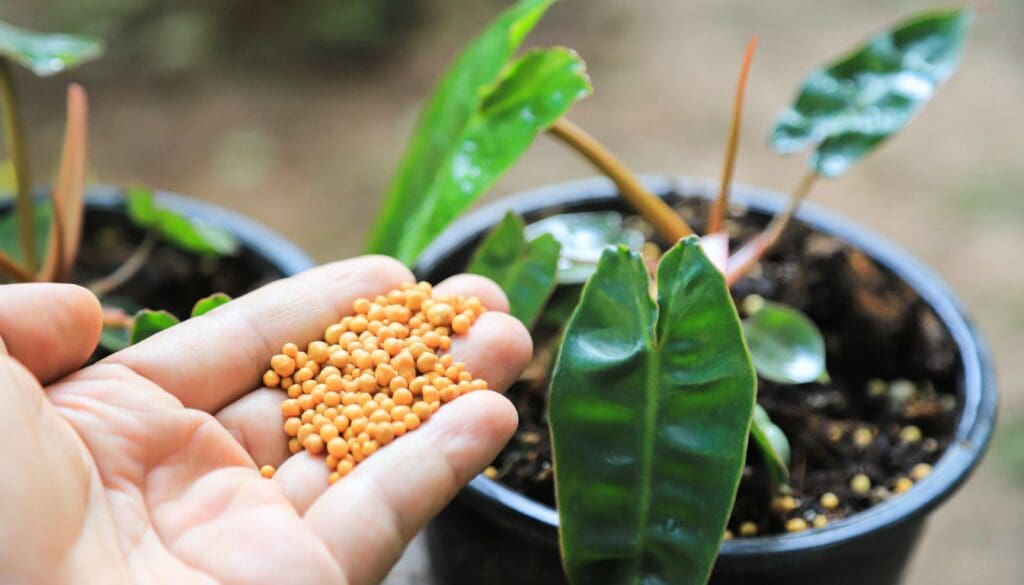
Feed the plant with a balanced liquid or water-soluble fertilizer, diluted to half strength, once a month during the growing seasons – spring and summer.
During the winter, when development is slower, do not feed the plant. Add fertilizers once a month in the summer and fall, then once every six to eight weeks in the winter.
If your plant isn’t getting enough nutrients, it will grow slowly, and its leaves will be smaller than usual. As a result, employ a balanced amount of fertilizer at the appropriate time.
Also read: What Kind Of Fertilizer For Philodendron? (Best Fertilizer+Fertilizer Ratio)
Propagation
Propagation should be prevented in the cold winter months. If you wish to propagate the plant, make sure to take in 3-4 inch / 7-10 cm-long stem tip cuttings (with a minimum of 3 leaves attached) during the spring or early summer season only.
Cut just below a leaf node. Nodes contain specialized cells that help in producing new roots. Philodendron plant roots proliferate in water or wet soil.
Also read: How To Propagate Philodendron? (Soil And Water Propagation)
Tips for the maintenance of a philodendron in winter
If you are one who keeps your philodendron in water, then here are a few tips for you:
Keep the plant clean

Closed windows increase the dust and indoor pollution throughout the winter months. Dust and grime build-up can restrict the amount of light reaching the plant, which is very important given the short days.
Try to dust off the leaves gently in a week or two by using a soft cloth soaked in water. You can also use soap spray and few drops of lemon juice to remove stubborn dust build-up.
It takes more effort to keep plants healthy in the winter, but it is always well worth it.
Dropping of leaves is normal.
In the winter, plants shed their leaves to make up for the lack of light and shortage of energy.
Do not panic if your philodendron plant grows well throughout the warm months but appears to be doing the opposite in winter.
It is only a matter of adjusting to the changing seasons. If your plant has overgrown, you can remove a few leaves to prevent future leaf loss. In addition, it makes your plant appear fuller and bushier with time.
Also read: Why Are My Philodendron Leaves Falling Off? (Causes+How To Fix)
Regulate the soil

Philodendrons prefer loose, rich-in-organic-matter potting soil. The soil must be well-draining. It is recommended that you replace the dirt in your philodendron pot every couple of years or so.
Salt that collects in the soil due to watering and is not suitable for the plants, causing leaf browning and yellowing. You can flush out some salts by thoroughly watering the container until the water regularly pours out of the drainage holes.
However, the soil will eventually need to be replenished for fertile growth.
Pruning the philodendron
Hanging plants, trailing plants, and table plants are all the best options for philodendrons.
Pruning your philodendron plants regularly, regardless of style, will help keep your plant green, healthy, and whole. Just after a node, remember to cut down the leggy trails.
Do this regularly to promote bushiness and new growth. You can use a pair of scissors, pruning shears, or your fingernails to make smooth rather than jagged cuts.
Final thoughts
Philodendrons are beautiful indoor plants that do not require much care and are well-suited for every purpose. These plants are used by plant lovers or gardeners at corporate organizations and public events as decoration to catch public attention.
If you don’t want to lose your beautiful philodendron due to winter, change the care routine. Protect the plant from low temperatures, dry air, and cold drafts.
Ref: Wikipedia.
Recommended Garden Supplies
| Product Image | Our Recommended Gardening Supplies | Check Offers! |
|---|---|---|
Top Top
Top
Top
Top
Top
Top
Top
Top | rePotme Houseplant and Tropical Classic Potting Soil Mix | Check Offer On Amazon |
 Top
Top
Top
Top
Top
Top
Top
Top | Espoma Organic Indoor Plant Food | Check Offer On Amazon |
 Top
Top
Top
Top
Top
Top
Top
Top | GooingTop LED Grow Light 6000K Full Spectrum Clip Plant Growing Lamp | Check Offer On Amazon |
 Top
Top
Top
Top
Top
Top
Top
Top | Soil Moisture Meter | Check Offer On Amazon |
 Top
Top
Top
Top
Top
Top
Top
Top | Govee Hygrometer Thermometer, Bluetooth Enabled! | Check Offer On Amazon |
 Top
Top | LEVOIT Humidifiers for Large Room(Best For Plants) | Check Offer On Amazon |
 Top
Top
Top
Top
Top
Top
Top
Top | Upgraded DIY Automatic Drip Irrigation Kit, 15 Potted Houseplants Support | Check Offer On Amazon |
 Top
Top
Top
Top
Top
Top
Top
Top | Stainless Steel Heavy Duty Gardening Tool Set | Check Offer On Amazon |
 Top
Top
Top
Top
Top
Top
Top
Top | Bonide Insecticidal Soap | Check Offer On Amazon |
 Top
Top
Top
Top
Top
Top
Top
Top | Bonide 32 oz Spray Neem Oil for Organic Gardening | Check Offer On Amazon |
 Top
Top
Top
Top
Top
Top
Top
Top | Garden Safe Fungicide | Check Offer On Amazon |

